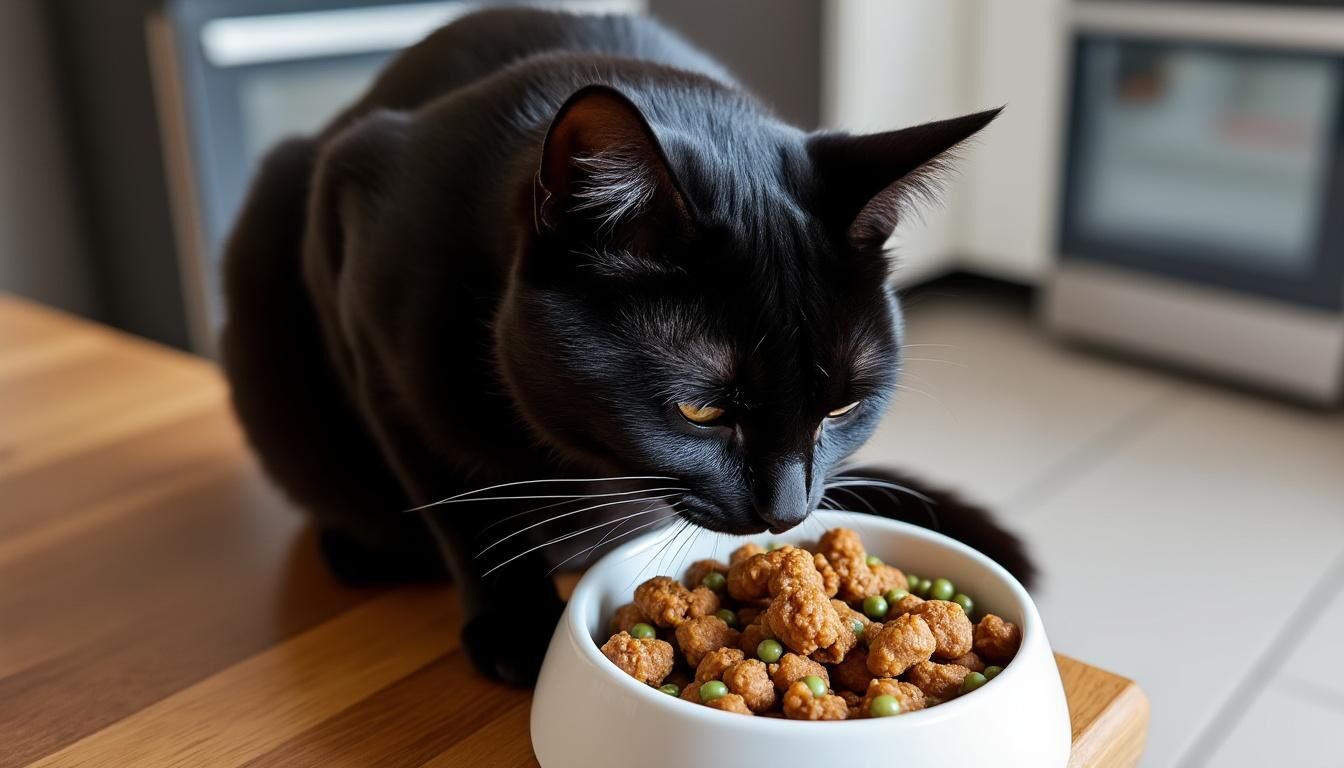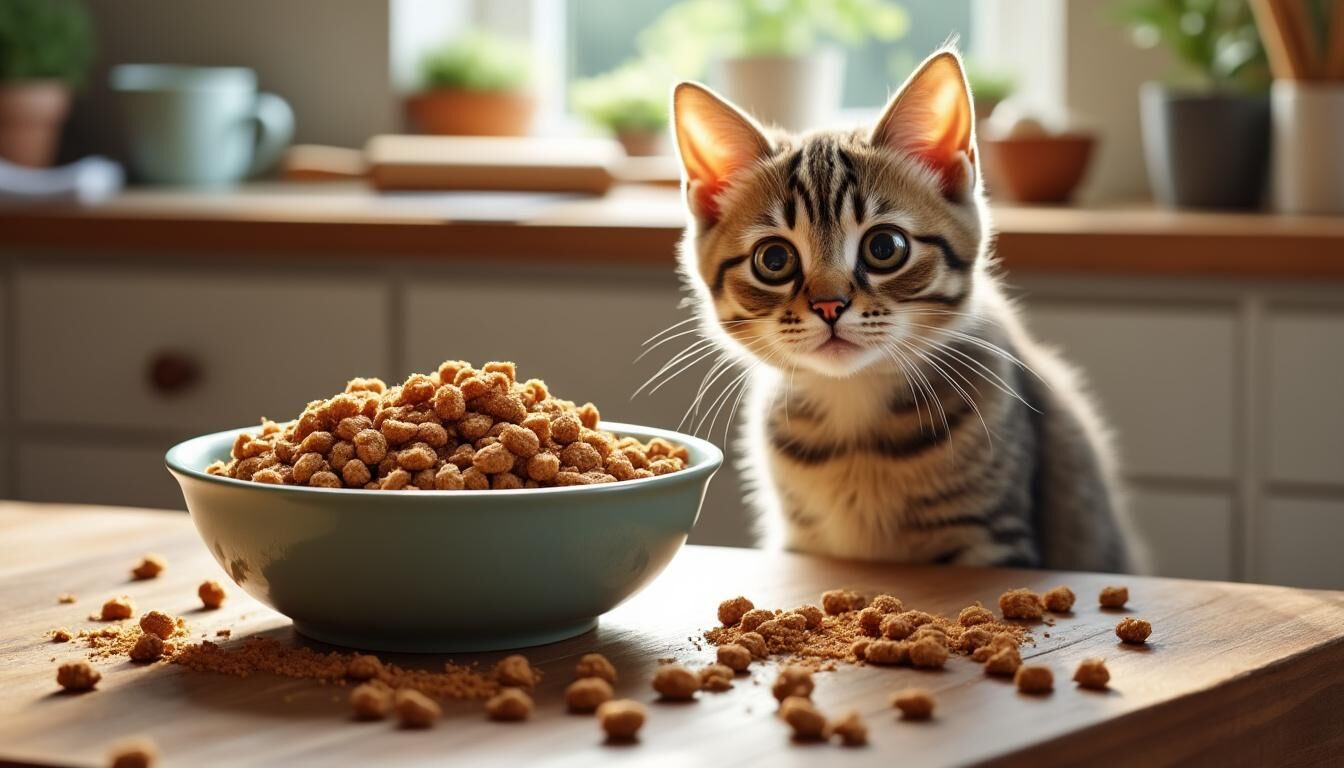Concerns about the presence of sawdust in cat food have sparked debates among cat owners for years. Many worry that low-cost or lesser-known pet food brands could include wood by-products disguised as nutritional fillers. However, while the term “sawdust” often emerges in conversation, the reality is quite different. What some cat foods do contain is powdered cellulose, a refined, plant-derived fiber primarily obtained from wood pulp—not raw sawdust. This clarification is essential in understanding the role and safety of such ingredients in feline diets. Misinformation fuels unnecessary fear, overshadowing facts about how these additives impact cats’ health and overall nutrition.
Distinguishing myth from fact reveals a more intricate picture behind the formulation of cat food. While fillers like cellulose do exist, their inclusion serves specific purposes related to digestive health and kibble texture, rather than simply bulking up food with worthless material. Furthermore, the food industry operates under strict safety regulations to ensure the well-being of companion animals, including cats. This article illuminates the nature of cellulose, its origin, how it compares to sawdust, and what cat owners should look for when selecting high-quality diets. By demystifying this often misunderstood topic, cat lovers can make more informed choices to optimize their pets’ health and longevity.
Is There Sawdust in Cat Food? Debunking Common Myths and Misconceptions
Why Do Cat Owners Worry About Sawdust in Cat Food?
Many cat owners express concern that some commercial cat food brands include sawdust or wood shavings to reduce production costs. These worries often stem from rumors circulating online and word-of-mouth stories that paint a grim picture of low-quality pet food loaded with inedible debris. The fear is that such fillers offer no nutritional value and may even harm cats. This anxiety is partially justified, as some inexpensive brands do rely on cheap plant fibers to stretch their recipes.
However, much of the apprehension about raw sawdust is misplaced. Experts emphasize that powdered cellulose—commonly mistaken for sawdust—is chemically and physically different from unprocessed wood by-products. The confusion persists because both originate from trees, but only one passes through extensive refining to become suitable for consumption in pet food.
Understanding the distinction helps cat owners navigate accusations and misleading claims. Reliable sources explain that:
-
Raw sawdust is never intentionally added to cat food.
-
Powdered cellulose undergoes purification before inclusion.
-
Some brands may use cellulose as an inexpensive filler.
-
Not all fillers are universally harmful but impact the quality and nutrition of the diet.
Understanding the Sawdust vs. Powdered Cellulose Confusion
The terms sawdust and powdered cellulose are often used interchangeably in casual conversation, but they refer to very different substances. Sawdust consists of coarse wood particles, often a by-product of carpentry or lumber industries. It contains lignin, resins, and other compounds potentially harmful if ingested.
Powdered cellulose, conversely, is a purified form of cellulose fiber extracted from wood pulp. This process removes harmful substances, leaving a fine, white powder used as a source of fiber in many human and animal foods. Its role is functional rather than nutritional, helping enhance texture and aid digestive health.
Key differences include:
|
Aspect |
Sawdust 🪵 |
Powdered Cellulose 🌿 |
|---|---|---|
|
Source |
Raw wood scraps |
Refined wood pulp fiber |
|
Processing |
Minimal or none |
Purified, chemically treated |
|
Composition |
Wood chips, resin, bark |
Almost pure cellulose |
|
Suitability for Pet Food |
Unsafe, not used |
Approved additive |
|
Purpose in Cat Food |
— |
Texture, fiber, filler |
This distinction underlines why concerns about sawdust itself in cat food are largely unfounded and why educating oneself about ingredients is crucial before jumping to conclusions.
What Is Powdered Cellulose in Cat Food and Where Does It Come From?
Is Powdered Cellulose the Same as Raw Sawdust?
Despite common misconceptions, powdered cellulose is not the same as raw sawdust. Powdered cellulose is crafted through an industrial refinement process that strips impurities from wood pulp to obtain almost pure fiber. Raw sawdust contains lignin, resins, and bark components that can be harmful if consumed over time.
Moreover, the texture, cleanliness, and chemical composition differ markedly. Powdered cellulose is a pale, fine powder that passes stringent safety standards for use in pet food, whereas sawdust is gritty and unregulated for consumption. The refinement ensures that powdered cellulose contributes to fiber intake without adverse effects.
-
Raw sawdust: Unfiltered wood waste, not approved as a food ingredient.
-
Powdered cellulose: Food-grade, safe fiber additive.
-
Both originate from wood but undergo vastly different handling.
-
Powdered cellulose is recognized by veterinary nutritionists as a harmless filler in moderate amounts.
How Is Powdered Cellulose Made for Pet Food Use?
The Refinement Process: From Wood Pulp to Food-Grade Fiber
The journey from raw wood to the powdered cellulose in cat food involves several steps to guarantee safety and purity. Manufacturers begin with selecting wood pulp from sustainable sources, typically hardwood or softwood trees. This raw pulp undergoes rigorous chemical and mechanical treatment to extract the cellulose:
-
🌲 Wood Pulp Harvesting: Trees are processed to obtain fibrous pulp free from contaminants.
-
⚗️ Delignification: Chemical treatments remove lignin, resins, and non-cellulose components.
-
🔄 Washing and Bleaching: Ensures whiteness and removes residual chemicals.
-
💨 Drying and Milling: Pulp is dried then milled into a fine, uniform powdered cellulose.
-
✅ Quality Testing: Samples undergo tests to confirm compliance with pet food safety standards.
The result is a purified fiber additive capable of improving texture and adding dietary fiber without introducing harmful substances. This process prevents the ingestion risks associated with raw sawdust.
Key benefits of powdered cellulose in its final form include:
-
Non-toxic and safe fiber source.
-
Supports healthy bowel movements in moderate quantities.
-
Improves kibble consistency and reduces crumbly texture.
-
Widely approved by organizations monitoring pet food safety.
The Role of Powdered Cellulose and Fillers in Commercial Cat Food
Why Do Manufacturers Add Cellulose to Cat Food?
In the highly competitive cat food market, some manufacturers incorporate powdered cellulose to serve several functional purposes:
-
📉 Cost Reduction: Cellulose is inexpensive compared to premium animal protein.
-
🧱 Bulk and Texture: Adds structural integrity to kibble and prevents crumbling.
-
⚙️ Fiber Content: Supplements dietary fiber to support digestive health.
-
🎯 Binding Agent: Helps blend various ingredients together effectively.
While in small amounts this additive may assist in maintaining palatability and promote gastrointestinal regularity, excessive reliance on fillers like cellulose often signals a compromise in quality. Brands focusing on high-quality formulations typically minimize these fillers, prioritizing valuable nutrients over non-nutritive bulk.
Identifying Lower-Quality Cat Foods Through Filler Ingredients
Adding non-nutritive fillers like powdered cellulose can be a red flag for cat owners aiming to provide top-tier nutrition. Such inclusion usually means:
-
💰 Manufacturers are cutting corners to reduce production costs.
-
🐱 Cats get less animal protein and more carbohydrates from fillers.
-
⚠️ Increased risk of overfeeding leading to obesity due to low nutrient density.
-
❌ Potential for nutrient imbalances and poor health outcomes.
-
🚫 Presence of by-products or vague ingredients masking limited meat content.
Quality indicators often associated with premium cat food include transparent labeling, named animal proteins, and minimal use of fillers or artificial additives. Educated consumers benefit from consulting veterinarians and trusted sources about ingredients that genuinely support feline well-being.
Is Powdered Cellulose Safe for Cats? Regulatory and Health Perspectives
AAFCO and FDA Guidelines on Cellulose in Pet Food
Regulations from agencies such as the Association of American Feed Control Officials (AAFCO) and the FDA oversee pet food safety in the United States. These bodies classify powdered cellulose as a permitted additive within established limits, recognizing its function as a non-toxic fiber source.
AAFCO’s ingredient definitions specify powdered cellulose under acceptable terms, indicating that it is suitable for inclusion in animal diets when used responsibly. The FDA similarly monitors manufacturing practices to minimize contaminants and ensure compliance.
Key regulatory points include:
-
✅ Approved additive: Widely accepted in limited quantities.
-
⚠️ Usage limits: Excessive amounts are discouraged.
-
🔍 Ingredients labeling: Must be transparent about cellulose inclusion.
-
🛡️ Monitoring: Oversight to prevent harmful contamination.
How Much Cellulose Is Too Much for Cats?
While small amounts of powdered cellulose are safe, excessive fiber can cause digestive upset. Most commercial products keep cellulose below 5-8% of total formula weight. Above this level, cats may experience:
-
💨 Gas and bloating
-
💩 Diarrhea or constipation
-
🍽️ Reduced appetite due to bulkiness
Since cats have limited ability to digest plant fibers—they lack cellulase enzymes—high cellulose diets can strain their gastrointestinal system. Therefore, moderation is key to avoid negative health impacts.
Potential Digestive Effects of Excessive Cellulose Intake
Overloading a feline diet with fibrous fillers like cellulose may lead to long-term consequences beyond immediate digestive discomfort. Some observed effects include:
-
Disrupted nutrient absorption due to rapid transit time
-
Increased risk of obesity from caloric dilution requiring more intake
-
Poor coat condition reflecting suboptimal overall health
-
Heightened sensitivity or allergic reactions
Veterinarians often advise pet owners to monitor cat food labels carefully to avoid products with excessive amounts of such fillers. A balanced diet supporting feline physiology remains paramount for sustained wellness.
How to Read Cat Food Labels: Spotting Powdered Cellulose and Fillers
Key Indicator Words for Cellulose and Plant-Based Fillers
Understanding cat food packaging requires familiarity with terminology manufacturers use to describe fiber components or cheap fillers. Words signaling the presence of cellulose or similar additives include:
-
🌿 Powdered cellulose
-
🌾 Plant fiber
-
🌰 Beet pulp (often a preferable fiber)
-
🍃 Pea fiber
-
📦 Vegetable fiber
-
🌾 By-products (animal or plant derivatives, varying in quality)
-
🔍 Vague terms like “fiber” or “carbohydrates” without specification
Careful label reading helps identify formulas rich in valuable protein and low in unnecessary carbohydrates or additives. When in doubt, seeking guidance from a veterinarian or trusted pet nutrition resources is wise.
Choosing Transparent and Nutritious Cat Food Brands
Transparency on ingredient sourcing and labeling indicates high quality and ethical manufacturing. Features to look for when selecting cat food include:
-
✔ Named animal proteins listed first (chicken, salmon, turkey)
-
✔ Limited use of generic by-products or plant-based fillers
-
✔ Absence of artificial additives or colors
-
✔ Clear nutrition profiles and guaranteed analyses
-
✔ Endorsements or review by reputable pet nutrition experts
By opting for brands prioritizing animal protein and natural ingredients, cat owners can reduce unwanted exposure to fillers like cellulose. This supports optimal health outcomes and mitigates worries about inferior cat food manufacturing practices.
Meeting Feline Nutritional Needs: Real Meat vs. Fillers Like Cellulose
Why Cats Require High-Protein, Meat-Based Diets
As obligate carnivores, cats rely on a diet rich in animal protein to obtain essential amino acids, fatty acids, vitamins, and minerals to maintain muscle mass, energy, and organ function. Their metabolism is designed to derive most nutrients from meat rather than plant sources. Key reasons for emphasizing meat include:
-
⚡ Delivery of taurine, an amino acid critical for eye and heart health
-
🛡️ Supporting immune system strength with meat-derived micronutrients
-
💪 Preservation of lean body mass through high-quality protein
-
🔥 Efficient metabolism of fats and proteins over carbohydrates
By contrast, fillers like cellulose provide minimal to zero nutritional value and cannot replace these vital nutrients in feline diets. Overuse of such ingredients can disrupt nutrition balance.
Better Fiber Alternatives in Quality Cat Foods (Beet Pulp, Pumpkin, Pea Fiber)
Higher-grade cat foods use more beneficial fiber sources than powdered cellulose. These natural alternatives aid digestive health without compromising nutrition:
-
🥕 Beet pulp: Moderately fermentable fiber improving gut flora and stool quality.
-
🎃 Pumpkin: Gentle fiber supporting hydration and bowel regulation.
-
🌱 Pea fiber: Adds fiber and some protein while enhancing kibble texture.
Compared to cellulose, these fibers blend functionality with improved palatability and digestive benefits. Premium brands incorporate such ingredients in balanced quantities to complement animal protein rather than replace it.
|
Fiber Source |
Origin |
Benefits |
Typical Use in Cat Food |
|---|---|---|---|
|
Powdered Cellulose 🌿 |
Wood pulp |
Inexpensive fiber, texture enhancer |
Low to moderate amounts in budget formulas |
|
Beet Pulp 🥕 |
Beet processing by-product |
Supports gut health and stool quality |
Mid to premium quality formulas |
|
Pumpkin 🎃 |
Vegetable |
Natural fiber, hydration support |
Premium, natural-focused diets |
|
Pea Fiber 🌱 |
Legume |
Fiber and some protein, texture aid |
Mid to high-quality kibble blends |

FAQ
Is sawdust actually used in any cat food?
No, raw sawdust is never used in cat food. Powdered cellulose, a refined fiber from wood pulp, is sometimes mistaken for sawdust but is a safe, purified ingredient commonly found in some commercial foods.
Can cellulose cause health problems in cats?
In small quantities, powdered cellulose is safe. However, excessive intake may cause digestive issues like bloating or diarrhea, as cats cannot digest plant fibers efficiently.
How can I tell if my cat’s food contains fillers like cellulose?
Look for terms such as “powdered cellulose,” “plant fiber,” or generic “fiber” on the ingredients list. Transparent brands will clearly list quality animal proteins first and use fillers sparingly.
Are all fibers bad for cats?
No, some fibers like beet pulp and pumpkin are beneficial and commonly used in high-quality cat foods to support digestion without compromising nutrition.
Where can I find trustworthy information about cat food ingredients?
Consult veterinary professionals and reputable sites like domestic-cat.com for science-backed advice on pet food quality and ingredient safety.

